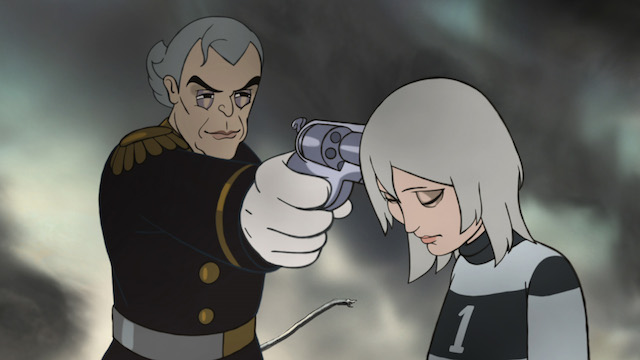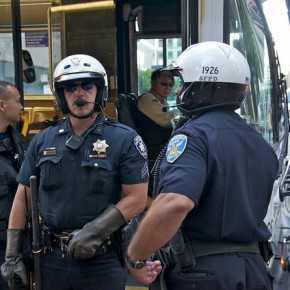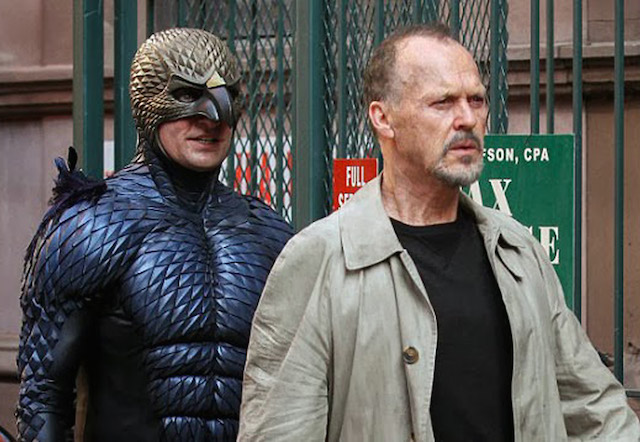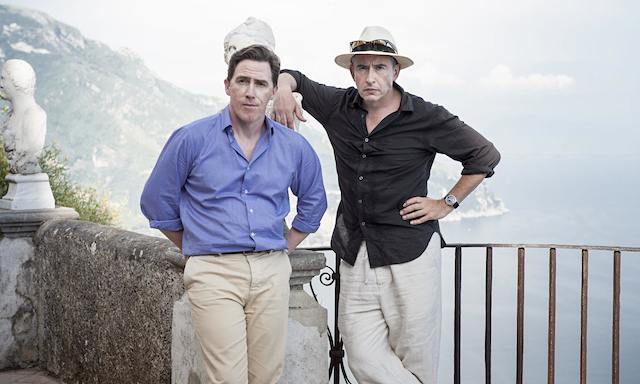It’s increasingly difficult to write year-end surveys. They seem to come earlier and earlier each year, and are hardly special in a landscape of reportage made almost entirely of lists. A top ten of lists would almost be worth it, if not for the risk that such navel gazing would precipitate Internet implosion (or self-loathing). Moreover, there was a lot of cinema in 2014 that merits note.
Most Glorious Cinematic Experience: A mounted, static 16mm camera confined to a cable car carrying passengers up and down a mountain, to and from a temple might not immediately suggest cinematic pleasure. And yet, Manakamana (Stephanie Spray and Pacho Velez, 2013) delivers a thrilling experience in its deceptive simplicity that realises the value of cinema as artistic medium and as site for viewing. Indeed it delivers upon the promise of its provenance, Harvard’s Sensory Ethnography Lab, which is dedicated to promoting “innovative combinations of aesthetics and ethnography” and responsible for the breath-taking Leviathan (Lucien Castaing-Taylor and Véréna Paravel, 2012.)
For the duration of each 10-minute journey, the audience can look upon the travellers, or the countryside, scanning every inch of the screen for meaning in a manner that evokes the religious experience and quest of the pilgrims. The cable car unites the mudanity of the commute with the sanctity of the intention, and for the audience replenishes the site of the cinema with meaning and potential. It is once again a site of vibrant encounters and immersion in old worlds made new.
Runner Up: Based on the French graphic novel, Snowpiercer (BONG Joon-ho, 2013) finds humanity living aboard a thousand-car train after an experiment to counteract global warming goes horribly awry; and as it completes yet another yearly revolution around the earth, a revolution is in the works. This claustrophobic world is vivid, richly imaginative, bleakly funny, and provocative as political allegory for a brutal class system that is both the stuff of science fiction dystopias and today’s socio-economic landscape. The film, and in particular Tilda Swinton’s delirious performance, is a joy to behold. It runs off the rails, somewhat, as the ambition and excitement don’t always neatly cohere. But then, who needs that? Bring on the mess.
Honourable Mention: And speaking of mess, no discussion of a messy and glorious cinematic experience would be complete without a mention of The Congress (Ari Folman, 2013.) Beginning with a live-action Robin Wright selling the rights of her digitalised likeness to a studio for use as they will, the film launches its exploration of the entanglement of virtual and real, particularly as managed by corporations. The second half, taking place twenty years in the future, pursues this notion, as it moves into (and occasionally out of) animation, in a world where studios dispense not only media, but also pharmaceuticals.
The themes of virtual and real become snarled, ushering in questions of delusion and sanity, hallucination and reality, corporations and governance, and the boundaries of humanity. Ostensibly based on Stanislaw Lem’s novella, The Futurological Congress, even here Folman plays with the limits and understandings of adaptation. The film has divided its audiences, and for good reason, as it defies clarity in its sprawl. At the same time, the experiment is exhilarating and the animations, which call up a history of styles can be as delightful as they are confounding.
Atmospheric, Empty and Enjoyable: The Double (Richard Ayoade, 2014), The Only Lovers Left Alive (Jim Jarmusch, 2013), Maps to the Stars (David Cronenberg, 2014.)
Films to Watch After the Bitter Disappointment of the Scottish Referendum: Many have mistakenly characterised the wish for Scottish independence as a form of petty nationalism. This may have been the case for some, but for many it was an economic and social justice movement drawing its power and inspiration from a rousing grassroots movement. The excitement was palpable as was the disappointment in the days following the referendum. Films provided both relief and resuscitation. In a nod to solidarity, the three films (docudrama, socialist realist drama, and documentary) are all winners:
The sweet and lively Pride (Matthew Warchus, 2014) is based on the Gays and Lesbians Support the Miners campaign, where London (and other urban-based) queer activists came out to help Welsh minters during the strike of 1984. It serves as a moving reminder of what can be done, even if Thatcher and her ilk did win out. And thanks to the Internet, the truly nostalgic offering of All Out! Dancing in Dulais (1986), a video document of the action, is available, is on YouTube.
With archival footage not often seen and a focus on the miners themselves, Still the Enemy Within (Owen Gower, 2014), presents a powerful and affecting tribute to those who fought on the front line in a battle of economic forces that ultimately triumphed. But perhaps with more films like this (crowd-funded, no less), people can once again be roused to fight the good fight.
In Deux Jours, Une Nuit/Two Days, One Night (Jean Pierre and Luc Dardennes, 2014) Sandra (Marion Cotillard in a surprisingly good and unobtrusive turn given that a star in a socialist realist drama can be more distracting than effective) visits her co-workers over the course of a weekend to ask them to forego their bonuses so that she may keep her job. Although excruciating and demoralising, the exercise also turns out to awaken strengths and motivation stifled by depression and a workplace that encourages disunity and estrangement. Unlike other Dardennes films, where good feelings are in short supply or subtle to the point of bare satisfaction, this one is surprisingly uplifting.
Most Subversive Pleasure: Unruly women are hardly new to the world of film and television. Bawdy and brash, they challenge the patriarchal confines of feminine expectations. Melissa McCarthy may be the most obvious choice in light of the array of wild characters she plays (such as the eponymous Tammy (Ben Falcone, 2014.) However, more notable were the films (and their stars) that took on old genres and injected them with new life.
The most subversive of the subversive pleasures was Feuchtgebiete/Wetlands (David Wndendt, 2013.) Based on Charlotte Roche’s splendid novel of the same name, the film introduces the rambunctious Helen Mermel (Carla Juri), whose gleeful delight in her own body manifests in inventive masturbation, copious sex, and dubious hygienic practices. Because the popular press characterised it as grossout film and endurance viewing I went in fearful. What I found, however, was something funny, perverse, and humane. The ‘disgusting’ scenes in this film have male corollaries in mainstream films and popular culture, but those are treated as laughs rather than the latest iteration of Human Centipede (Tom Six, 2009.) It’s not that there weren’t some unpleasantly haptic moments; this film is not recommended for the squeamish or the proper. But there is truly something joyous in the story of a young woman who refuses to self-regulate and manage a body that is treated by society as inherently dirty.
Runner Up: Further reinventions of the rom-com came in Obvious Child (Gillian Robespierre, 2014,) which opens with stand-up comic protagonist Donna Stern (a fabulous Jenny Slate) discussing panties in a way that would appeal to Helen Mermel. The film focuses on a young woman’s experience of an unplanned pregnancy and her decision to have an abortion. It is shocking to think that this is a radical choice for a topic in the 21st century, but after a slew of films that treat abortion as a choice to be considered and then dismissed, and which grant only male characters anxiety about parenthood and maturity, this was a refreshing take on a difficult subject.
Honourable Mention: Although it was television rather than film, I must give a shout out to the gleefully puerile (or should I say, ‘puellile’?) Broad City (Created by Ilana Glazer and Abbi Jacobson.) It may be yet another show about twentysomethings in the big city, and it may be yet another iteration of delayed adulthood—a common theme these days. But it is also hilarious and delightful.
A Passing Thought: As a successful star and traditional beauty, Scarlett Johannson is not an unruly woman. However, she seems to have transcended the human as well in three separate films. In the compelling and haunting Under the Skin (Jonathan Glazer, 2013,) she plays an alien who roves across Scotland, seducing men for harvesting. Her (Spike Jones, 2013) offers only a disembodied performance, as Johansson plays artificial intelligence whose development of consciousness takes her beyond the human schema for technology. And a new drug transforms the titular Lucy (Luc Besson, 2014) into a fighting machine who operates “beyond human logic.” These roles are much better suited to her—certainly more so than those that expect an audience to believe she is a working class, rom-com consuming woman or a crude and desperate seductress.
And No: The overrated Nymphomaniac Vol. I and II (Lars Von Trier, 2013) does not belong in this list, particularly as von Trier’s prudishness is really at odds with the exuberant celebration of women unbound. But as it does have Stellan Skarsgård, this seems a time to mention the enjoyable Kraftidioten/ In Order of Disappearance (Hans Petter Moland, 2014) which otherwise would not make this discussion, falling short of the earlier (and superior) En ganske snill mann/A Somewhat Gentle Man (2010.)
Most Cinematic Representations of Unrepresentable Histories: When I first watched L’image manquante/The Missing Picture (Rithy Panh, 2014) I suspected it would be on my top ten list as at the close of 2014, I can confirm that is the case. This lyrical, harrowing, and deeply personal account of Panh’s experience during the Cambodian genocide and the challenges of recovering a memories lost with those past, to trauma, or to narratives that dominate and erase the victims, has stayed with me all year. Its cinematic invention and experimentation bear mention, whether in the stunning, often multi-media dioramas featuring lovingly crafted clay figurines or in Panh’s repurposing of his own films, a gesture to the magnitude of history that defies telling in a single film.
Runner Up: Pawel Pawilkowski’s Ida (2013) combines intimacy and estrangement, formally and narratively in this story of a young nun who learns that she is Jewish and of the fate of her family. The black and white film may evoke “history” but also suggests that which is hidden when a register of storytelling dominates. Thee compositions that place characters low and to the side of the frame make them part of a larger landscape, of Poland and its history that looms above them, a heavy presence even in its seeming absence.
Honourable Mention: It is probably appalling to give Le dernier des injustes/The Last of the Unjust (Claude Lanzmann, 2013) only an honourable mention. After all, Lanzmann could be considered the father of representing the unrepresentable courtesy of the masterful Shoah (1985,) which is essential viewing still. Indeed, Last of the Unjust is an intriguing film, as Lanzmann returns to his own exclusions from Shoah as he provides footage from his visits with Benjamin Murmelstein, the last leader of the Judenrat in Theresienstadt. His conflicted role as collaborator and yet possible saviour of many Jewish lives yielded simply too many contradictions for the already rich and complex Shoah. In exploring the 1970s interviews and placing them in relation to contemporary footage of Lanzmann in present-day Theresienstadt, Lanzmann reflects not only on the representation of the Holocaust, but in his own role as its narrator. This is a film for multiple viewings and further consideration.
Not Listed: I would have loved for the highly anticipated 12 Years a Slave (Steve McQueen, 2013) to hold higher rank on this list. It was a gripping and horrific story that was wonderfully acted and stunningly shot. But perhaps these dramatic delights, the touches of Hollywood, were precisely what stopped my full appreciation, particularly in light of McQueen’s Hunger (2008,) which combined bodily suffering and temporal uncertainty in a way that defied narrative pleasure. And there was also the Hans Zimmer score, dedicated to forcing abominable precarity into a musical logic of crescendos and diminuendos.
Most Mistakenly Described as Original: This award is not to say that Boyhood (Richard Linklater, 2014) isn’t lovely and a noteworthy experiment in filming an actor across 12 years. The dips into day in the life from year to year produced something evocative, as it put on display the elusive qualities of time passing. And it conveyed the important story of how academics live in constant threat of poverty. But it was not the first of its kind. There is Michael Apted’s Up Series, a longitudinal documentary that checks in with its subjects every seven years. But more absent in all discussions of the film was Michael Winterbottom’s Everyday (2012,) which was shot over the course of five years. It is a different film, focussed more on the two protagonists, a man doing time and his wife (the wonderful John Simm and Shirley Henderson respectively,) than on the children that grow up around them. But even with the greater drama, it is a gentle and human approach to time’s fleeting and evasive aspects.
A List of Excellent Films in No Particular Order:
Dabba/The Lunchbox (Ritesh Batra, 2013): A mistaken lunchbox delivery leads to an ongoing exchange of letters between a man facing retirement (the splendid Irffan Khan) and a young housewife.
What We Do in the Shadows (Jemaine Clement and Taika Waititi, 2014): A truly enjoyable and funny mockumentary about flat-sharing vampires in New Zealand.
Vi är bäst!/ We Are the Best (Lukas Moodysson, 2013): Moodysson finally takes a break from him more recent run of gutting and disturbing films with an adaptation of his wife’s graphic novel about three girls in 1980s Stockholm who start a punk band.
The Babadook (Jennifer Kent, 2014): This is genuinely unsettling horror film of a woman repressing the dissatisfaction and loneliness that comes with her experience of motherhood.
Frank (Lenny Abrahamson, 2014): An unusual comedy-drama that deals with mental-health issues in a combination of punk and decency.
Short Term 12 (Destin Daniel Cretton, 2013): An affecting, intimate, and gentle drama set in a group home for teenagers.
Thank You to DVDs For Catch Up:
HaShoter/Policeman (Nadav Lapid, 2011): A critical look at anti-terrorist police, Israeli masculinity, and anti-capitalist radicals. Also, Yiftach Klein. What’s not to love?
Darbareye Elly/About Elly (Asghar Faradi, 2009): Families on holiday deal with the mysterious disappearance of Elly, a teacher pressured to join them, in this film that is less psychological thriller and more compelling portrait of class in Iran.
Middle of Nowhere (Ava DuVernay, 2012): As a woman’s husband is incarcerated for eight years, she struggles with loneliness and identity. The editing and narrative styles contribute to a feeling that she, too, is doing time along with her partner.
Looking Forward:
The Look of Silence (Joshua Oppenheimer, 2014): Joshua Oppenheimer’s follow-up to The Act of Killing, this time from the perspective of the victims.
Dear White People (Justin Simien, 2014): The tweets and YouTube shorts from the maker have already been a joy, but bring on the feature length film about black students at university.
The Interview (Evan Goldberg and Seth Rogen, 2014): It’s not that I want to see it; I just want to know how this is all going to play out.
Screenshot courtesy of Ari Folman.





